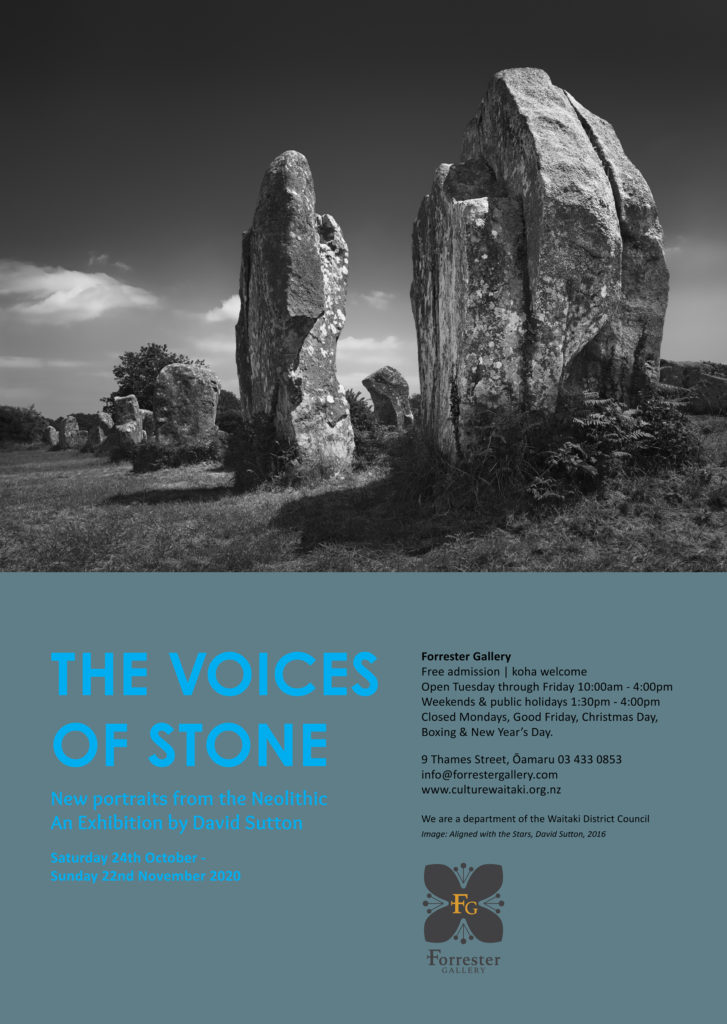I’ve been working on a new set of images in my “Stones” series.
I began making “portraits” of standing stones in 2007, and this will be the third exhibition in the project. These photographs were made in Carnac in Brittany in 2016 with the Fujifilm X-T1 and the process of working on the prints has been on-going. In 2018 I began discussions with the director of the Forrester Gallery. We looked at the space and considered the presentation and the theme. Shortly afterwards the Gallery closed temporarily for maintenance to the building and re-opened earlier this year.
Looking at options for printing, I decided to print them myself on my ageing Canon ipf6300. It was purchased in 2011 and was thrown at least a metre in the air in the Christchurch earthquake, but is still working well and the monochrome images from it are beautiful. But I’m aware it won’t last forever and this may be the last body of work I produce on this scale with this printer.
I always envisaged this series being in black and white, as I wanted to slightly abstract the images without losing too much of the sense of the viewer being in the presence of a real place. I was initially going to print on Epson Legacy Baryta. Baryta papers are reminiscent of silver halide darkroom prints, and can have a lovely satin finish. The problem is that there has been an issue with the manufacturing, and most baryta papers have disappeared from the market until new formulations are created. I managed to source a few rolls of the Epson paper from the US. Unfortunately small parts of the surface flaked randomly after printing, creating white dots which ruined the prints. So the Epson paper was discarded.
My favourite baryta paper was always Ilford Gold Fibre Silk. Ilford stopped making it some time ago, but after a worldwide search I located some 24 inch wide rolls in Melbourne and had them shipped here. Once they are used, that will be it. No doubt a suitable replacement will turn up, but setting up a new paper and profiling it can’t be done overnight.
People’s eyes are very sensitive to small changes in luminosity, and so black and white prints are more difficult to “get right”. Subtle processing is critical to a satisfactory result, especially when printing to the maximum limits of a printer. I’ve found it enjoyable but have had to design some new approaches (for me) to my processing.
The exhibition is entitled “The Voices of Stone: new portraits from the neolithic” and opens at the Forrester Gallery in Oamaru on the 24th of October.
